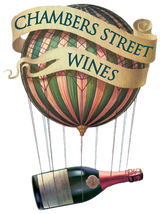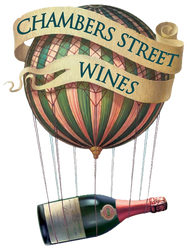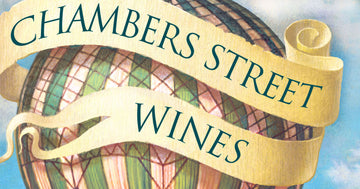The historic wines of Chateau Musar
6/18/22 -

In the Spring of 2019, I had the great pleasure of attending a lunch with Marc Hochar from Chateau Musar, Lebanon's most recognized and historic winery. I accepted the invitation because I knew the opportunity was rare to learn about the winery from one of the descendants of the founder, Gaston Hochar, and because I had only pulled the wines for customers at Chambers Street and had never actually tasted a Musar wine, red or white. I had always affiliated Chateau Musar wines with Bordeaux - an association that was not unfounded, as Musar uses Bordeaux bottles for their wines, and there is a long history of exchange and influence going back to Gaston's studies in Bordeaux before founding Chateau Musar, his friendship with Roland Barton (of Leoville Barton) during World War II (when Major Barton was stationed in Lebanon), and the studies of his son, Serge Hochar, in Bordeaux in the 60s. Due to this affiliation, I assumed that like many modern Bordeaux estates, Chateau Musar was probably farming with the use of chemical products, pesticides and herbicides, and adding an average level of sulfur to the wines before bottling. When I asked Marc Hochar about farming and sulfur use, I was amazed to find that my assumptions couldn't have been farther from the truth! It turns out that Musar has never sprayed pesticides or herbicides since their founding in 1930, all their wines are fermented with native yeast, and minimul sulphur is used, with the Chateau Musar Rouge receiving on average 19ppm of SO2 before bottling. In fact, the Chateau Rouge wines from the 60s and 70s had no addition of sulfur whatsoever. Though it wouldn’t influence my analysis of the wine’s aromas or palate, it was nonetheless a great discovery for me, as we try very hard at Chambers Street Wines to champion wines made in the most low-intervention, and natural way possible.

The history of Chateau Musar begins with Gaston Hochar’s founding of the winery in 1930, in the family’s chateau, overlooking the Mediterannean, north of Beirut. Prior to 1930, Gaston had traveled through Bordeaux and been inspired by the wines, so it’s safe to assume that the choice to plant Cabernet Sauvignon was influenced by his travels. Cinsault and Carignan, which make up the rest of the red varieties in the Chateau Musar rouge, were already found in Lebanon, with the arrival of Cinsault (and likely Carignan as well) tracing back to Jesuit monks who brought vines from Algeria to the fertile Bekaa Valley. The area itself has a much longer history than this, starting with ancient Phoenicians who began cultivating vines in the Bekaa Valley from around 4,500BC.

A temple in the ancient city of Baalbek is dedicated to Bacchus, the Roman god of wine, and the regions wines are mentioned multiple times in the Bible. The Bekaa Valley forms part of the fertile crescent, and the specific plateau of the Bekaa Valley, bordered by mountains, was perfect for viticulture. Phoenicians spread viticulture from here to Egypt, Greece, Italy and Spain between 2,500 and 500BC.
All of Chateau Musar's vines are located in the southern part of the Bekaa Valley, with Mount Lebanon to the west, and the the Anti-Lebanon or Eastern Lebanon mountains to the east, with the snow capped Mount Hebron their highest point. The climate is quite dry, with an average of 300 days of sunshine. Vineyards here are further south than the southernmost parts of Spain and Italy, so altitude is essential due to the amount of heat there. Luckily, due to the high altitude of the mountains surrounding the Bekaa Valley, conditions are ideal for vines, with cool nights balancing the hot and sunny days.

Musar's red vines are about 1000m above sea level on the slopes of the western mountain range. Whites are planted at higher elevation in the eastern Lebanon mountains, and the oldest vines, planted in 1920, are own rooted. Soils are mostly gravel over limestone bedrock.

The Chateau Musar Rouge was the culmination of decades of winemaking at the domaine, with Serge Hochar arriving at the final "formula" in 1977. The wine is always a blend of Cabernet Sauvignon, Cinsault, and Carignan. Grapes are fermented in cement, racked after 6 months, and aged in mostly used French barrels for a year. After 3 years the wines are blended, and this final blend is bottled and aged an additional 3-4 years. Each Chateau Musar Rouge vintage is released 7 years after the harvest. The Blanc is a blend of 75% Obeideh and 25% Merhaw, with vineyards nestled high in the eastern Anti Lebanon moutnains, at about 1500m altitude. Obeideh was believed to be a clone of Chardonnay, and Merwah a clone of Semillon, but it has been determined that both are indigenous to the Bekaa Valley. The whites are aged for 6-9 months in barrel, and then bottled and aged for 6 years before release.
Tasting notes here are from the informative website of the domain. Many thanks to Zaan Eksteen from Broadbent Selections, and Marc Hochar from Chateau Musar, for their help with this article.
-Eben Lillie


